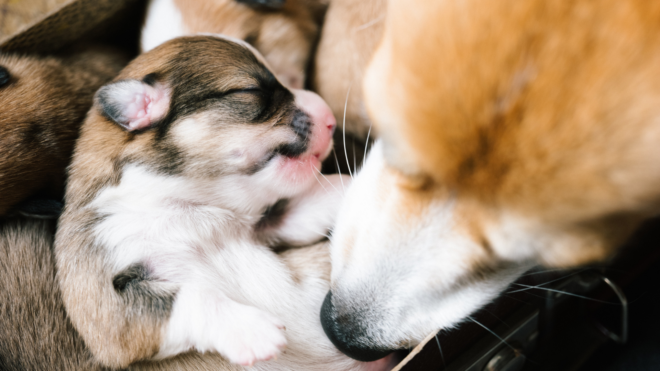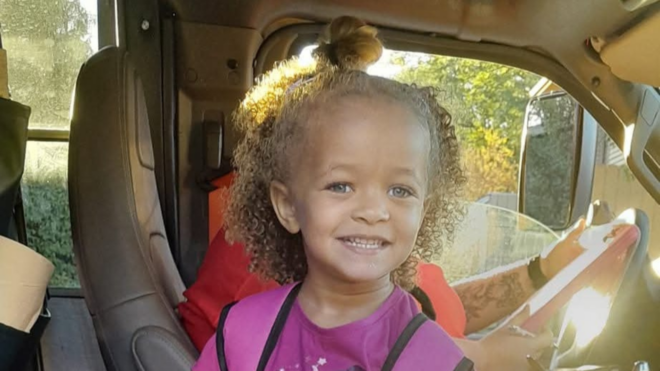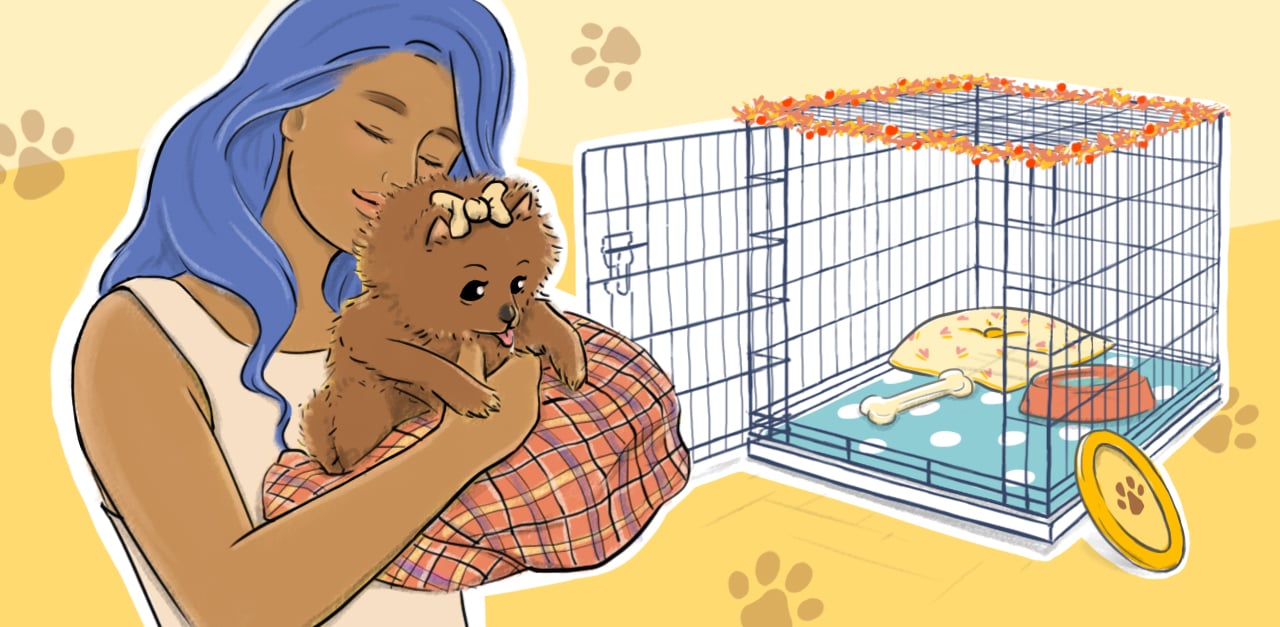
Getting a puppy is a huge commitment. It's exciting to welcome a new little one into your home, but it can also be quite stressful. Whether you get your new dog from a breeder or adopt from a shelter, you want to make sure your puppy has the best experience possible at your house. One of the best things you can do for a new puppy is crate training.
What Is Crate Training?
Crate training can be an effective way of creating a home within a home for your puppy. Wild dogs have a natural tendency to be den animals, wanting their own space to eat, take shelter, and raise their offspring. And while our canine pets may be adorably domesticated creatures, they still share some of the same tendencies as their wild counterparts. That’s why, when done properly, crate training can provide a comfortable place for your puppy to spend time.
Committing to the crate training process can also help establish rules and order in your home and keep your puppy from indulging in bad behavior. You can also crate train for your vehicle to help ensure safe and stress-free travel when going to the vet or heading out on road trips. Or perhaps you just want to provide your puppy with his very own space to indulge in doggy habits.
Whatever your motivation, here’s how to effectively crate train your puppy.
What to Keep in Mind Before You Begin Crate Training
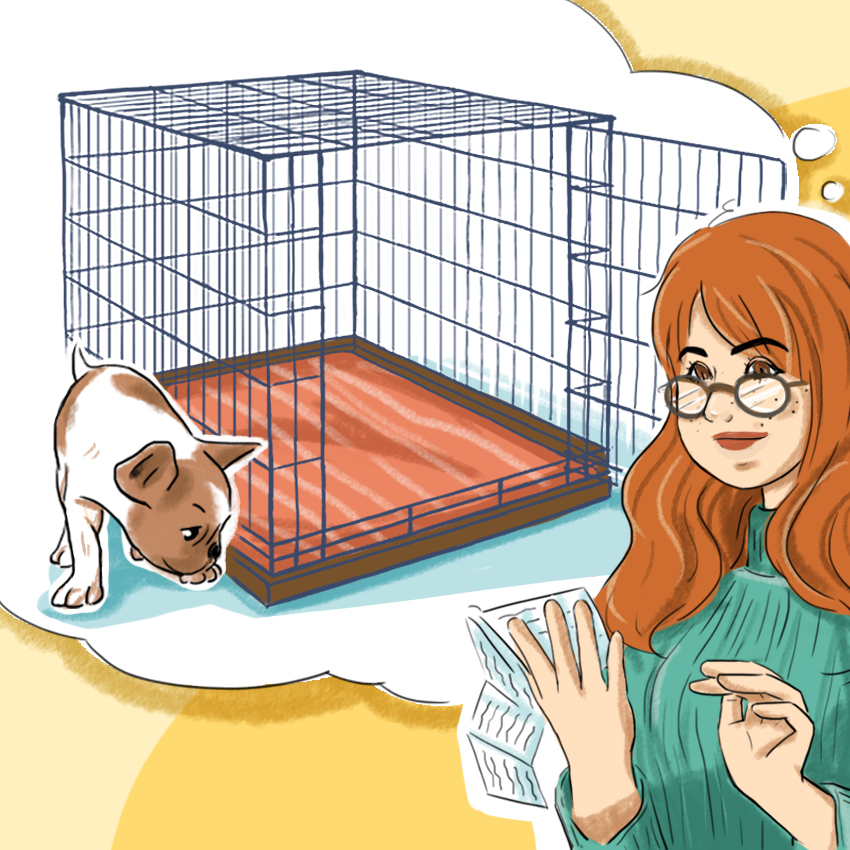
When you’ve made the decision to crate train your puppy, it’s important to prepare properly. As you get ready to start crate training, stay patient with yourself and your dog. It might take a few days or even a few weeks before your puppy gets the hang of things. It all depends on your commitment as well as the age, temperament, and background of your dog.
Remember that you should always associate the crate with positive actions and take it one step at a time so that you don’t overwhelm your pup (or yourself).
Selecting the Right Crate for Your Puppy
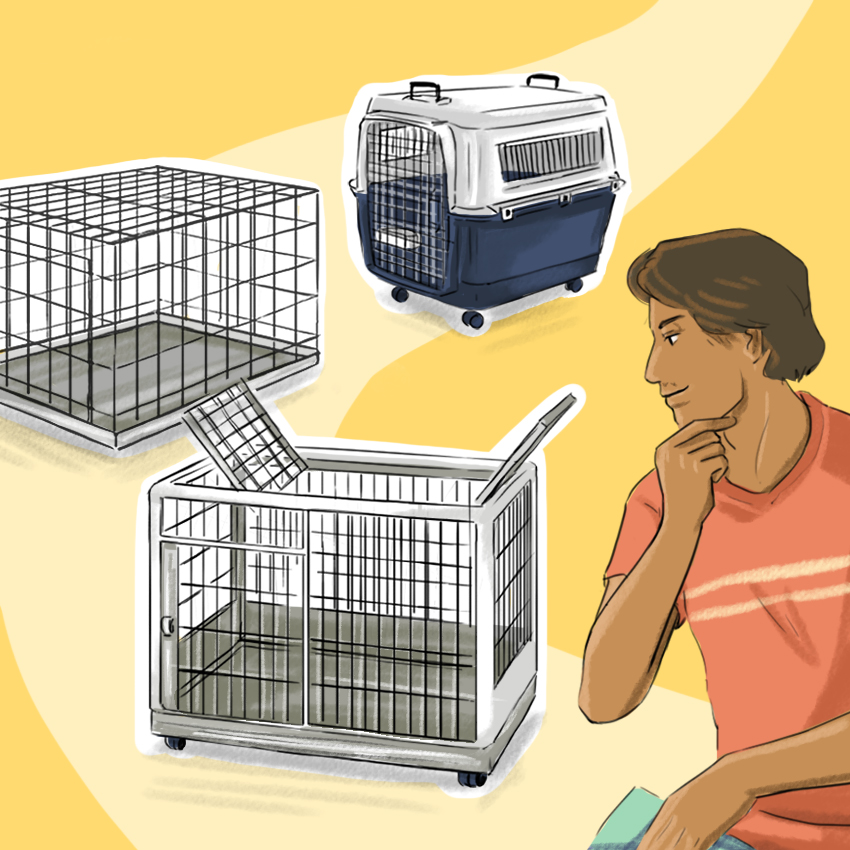
Most pet supply stores have a variety of crates available, ranging from plastic flight kennels to collapsible metal pens and fabric kennels. Here are some tips on how to choose a crate: A metal pen is a good option if you intend to leave your puppy alone in it for longer periods, whereas a fabric kennel is designed to be used only when the owner is present.
To determine what size crate you need, simply measure your dog from the top of his head (or ears if your dog has pointy ears) to the ground. To find the width, take that first number and add 2 inches for smaller breeds and 4 inches for larger breeds. Be sure that your dog can stand up and turn around comfortably in the crate and, if your pup is young, will be able to as he grows.
Setting Up the Crate for Crate Training
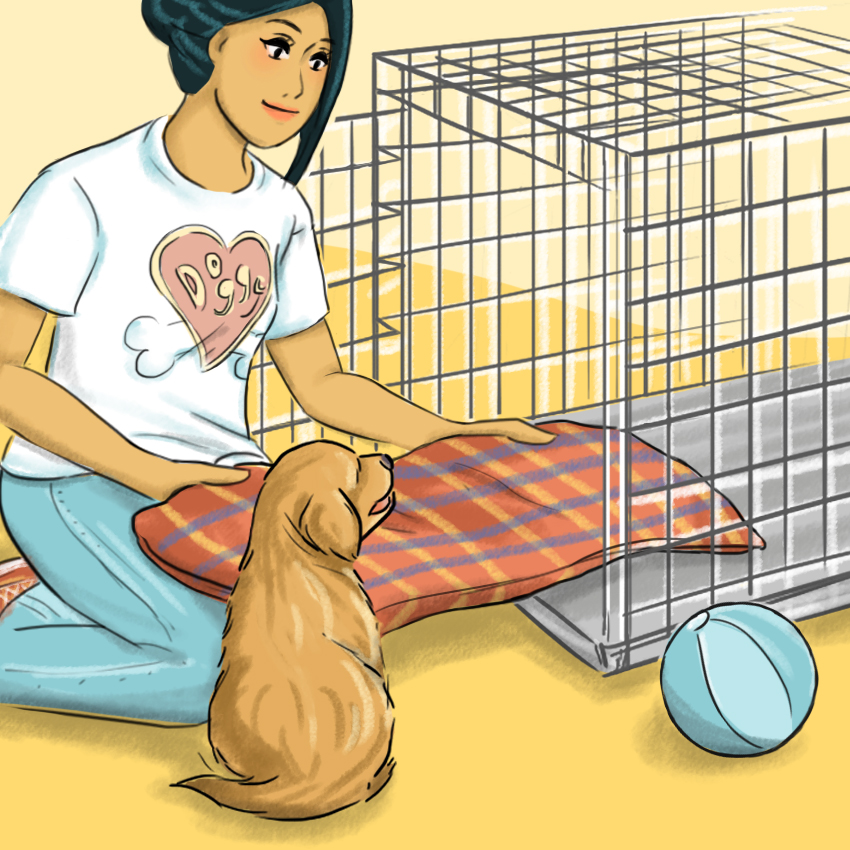
When determining where to place the crate in your home, choose a spot where the family spends a lot of time, such as the living room or den. This will help give the crate a positive, inclusive feel.
Adding a soft blanket or towel to the crate will also make the space a more comfortable and relaxing place for your dog. Feel free to put in a toy for some fun stimulation.
Make sure that the door to the crate is securely fastened open at first so that it won’t suddenly close and frighten your puppy.
Introducing Your Puppy to the Crate
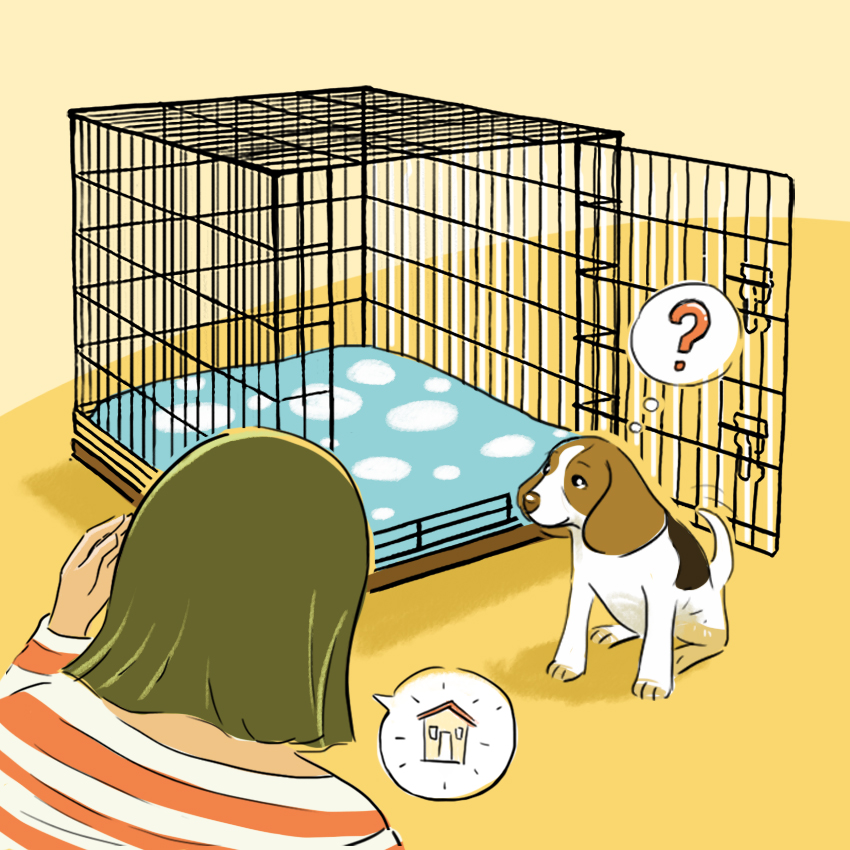
When you introduce your puppy to the crate, take things slowly, keep it friendly, and use a pleasant tone of voice. Place little treats outside the crate, then place a few more near the door, and so on until you've placed treats all the way inside. Don’t force your puppy into the crate (you don’t want to break the happy connection!), but instead keep putting a few more treats inside until your pup is willing to calmly walk into the crate to retrieve them.
The process of making your dog comfortable with the crate may take some time, but just keep working at it. Stay patient and give your dog plenty of positive reinforcement.
Feeding Your Puppy Meals in the Crate
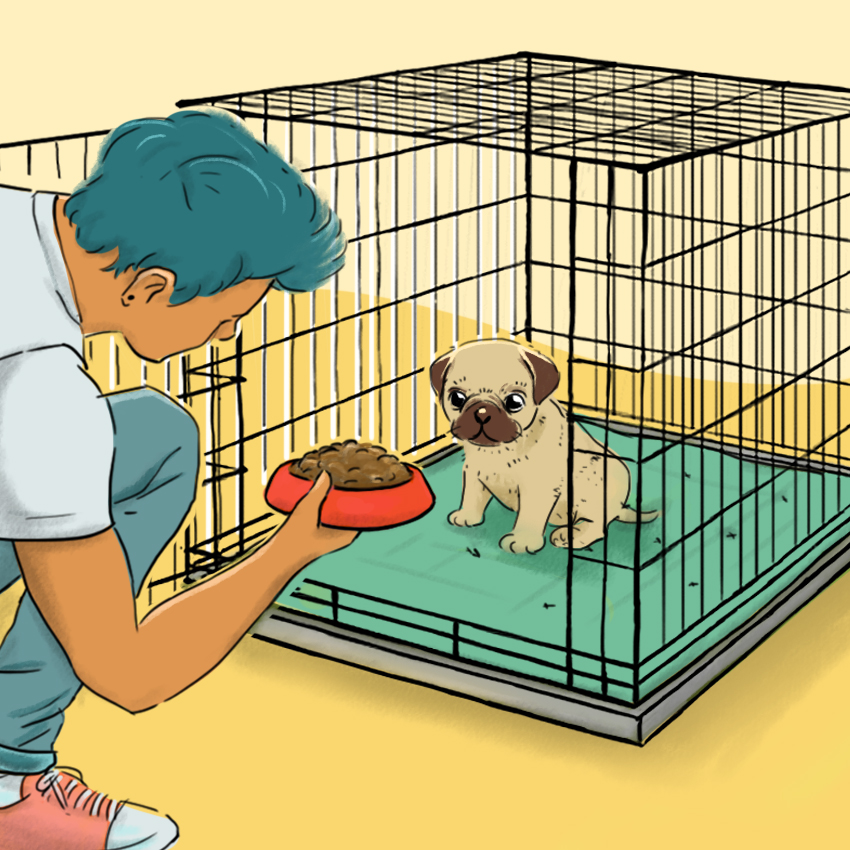
Now that your puppy has been introduced to the crate, continue to form a positive association by first putting your pup's regular meals near the crate and then eventually moving the food bowls inside.
If your puppy is hesitant to enter the crate to eat at the beginning, move the dishes closer to the door. Then, with each meal, move the food and water dishes a little bit farther back until your puppy is comfortable taking meals near the back of the crate. From there you can start closing the door to the crate while puppy is eating and reopen it when the meal is finished.
At the beginning of the process, open the door as soon as your pup is done eating. With every meal afterward, keep the door closed a little longer until your puppy is staying in the crate for 10 minutes after eating. If your puppy starts whining, you might have to shorten the waiting period. Don't open the crate until your puppy stops whining; otherwise, he will associate whining with getting out.
Getting Your Puppy Used to Longer Stays in the Crate
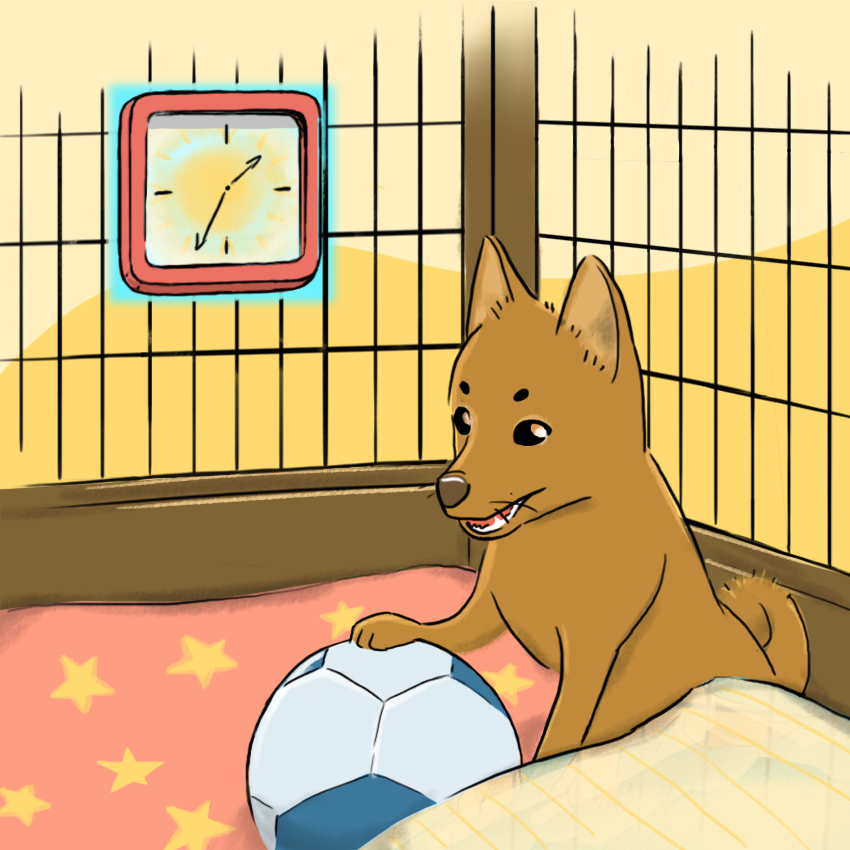
Now that your puppy is eating meals comfortably in the crate with no stress, work on leaving him in the crate for a short time while you are at home.
Call your puppy over to the crate using a positive tone of voice and encourage him to enter the crate with a treat. Give lots of praise after your puppy goes into the crate, and offer another treat. Close the door, and then quietly stay in the room for five to 10 minutes before going into a separate room. Wait in the other room for a few minutes, then come back and sit quietly again for another five to 10 minutes before letting your dog out of the crate.
Go through these steps multiple times a day, and each time, spend a little more time outside of the room until your puppy can comfortably be in the crate for about 30 minutes. At this time, work on leaving your puppy in the crate for short periods while you’re gone or for sleeping overnight.
This process can take a few days or a few weeks, so be patient and go at your puppy’s pace.
Crating Your Puppy When You Leave
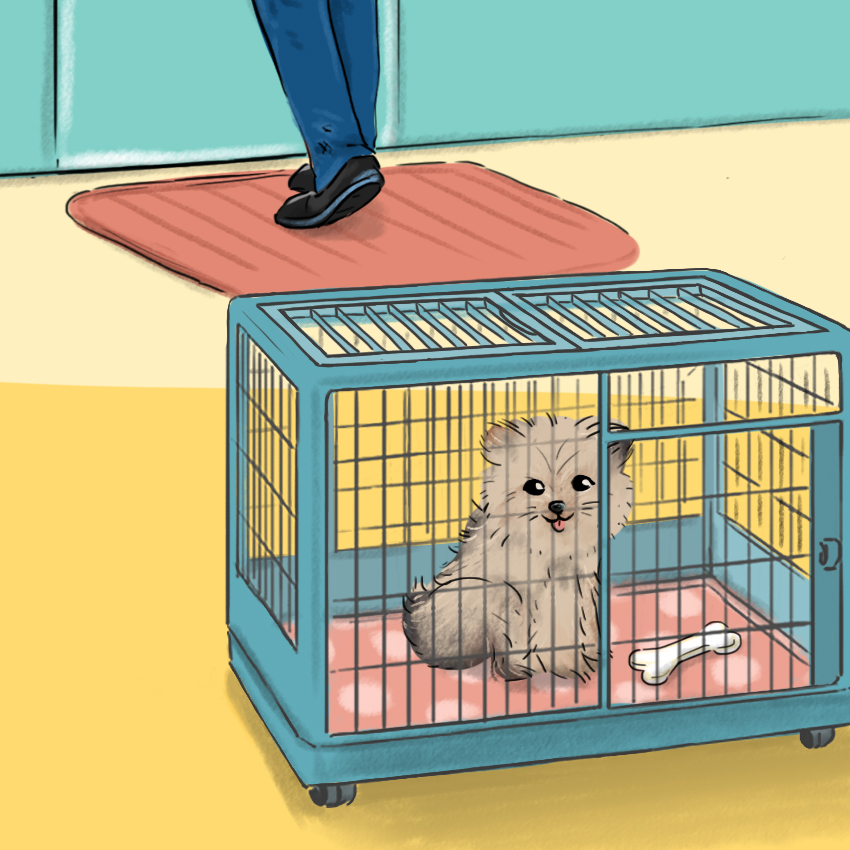
Once your puppy is comfortable spending time in the crate while you’re out of sight but still at home, it’s time to get your dog used to the times you actually leave the house (like when you go to work or out with friends).
Start with the same method of using positive commands and treats to get your pup into the crate about five to 20 minutes before you leave. If your dog seems a little nervous, provide an extra blanket or toy for added comfort. Then remain calm and quiet as you make your way out of the room and then outside. Do not make your goodbyes emotional or draw them out.
When you return home, keep things just as calm as you greet your dog and let him out of the crate.
Crating Your Puppy at Night
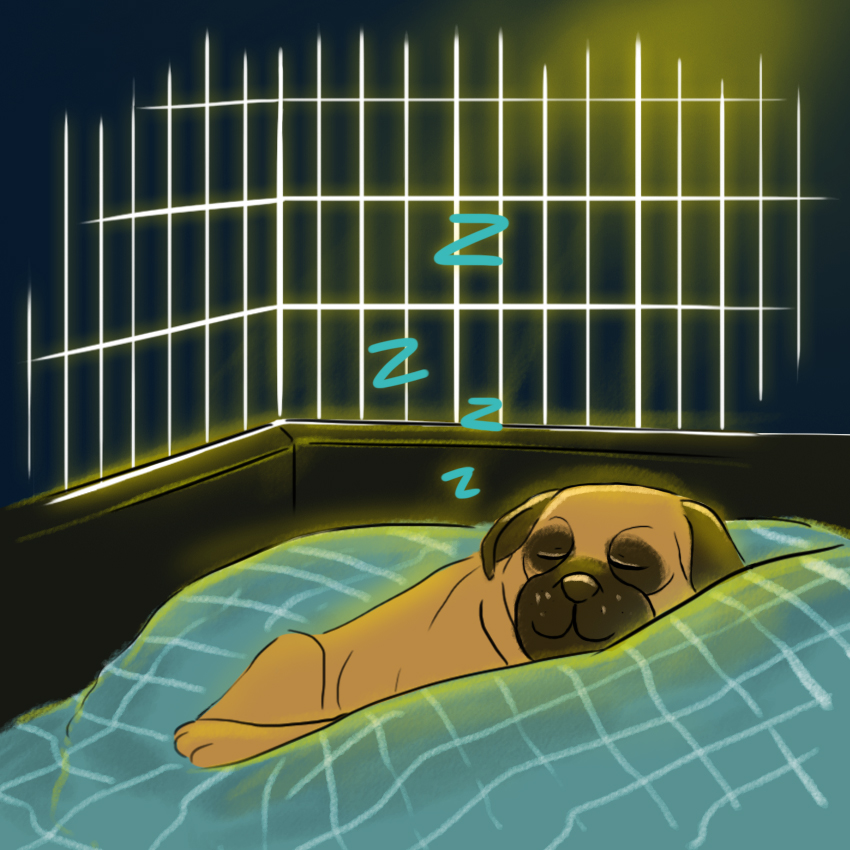
Crating at night can be a great way to keep your puppy calm and out of trouble. If this is an option that you want to explore, consider having the crate in your bedroom or just outside in the hallway so that you can easily get to puppy if he needs to pee during the middle of the night (which all puppies most likely will need to do when they’re little).
Once your dog is able to sleep through the night without a bathroom break, you can move the crate into a location that suits you better.
Mix Up When You Crate Your Puppy
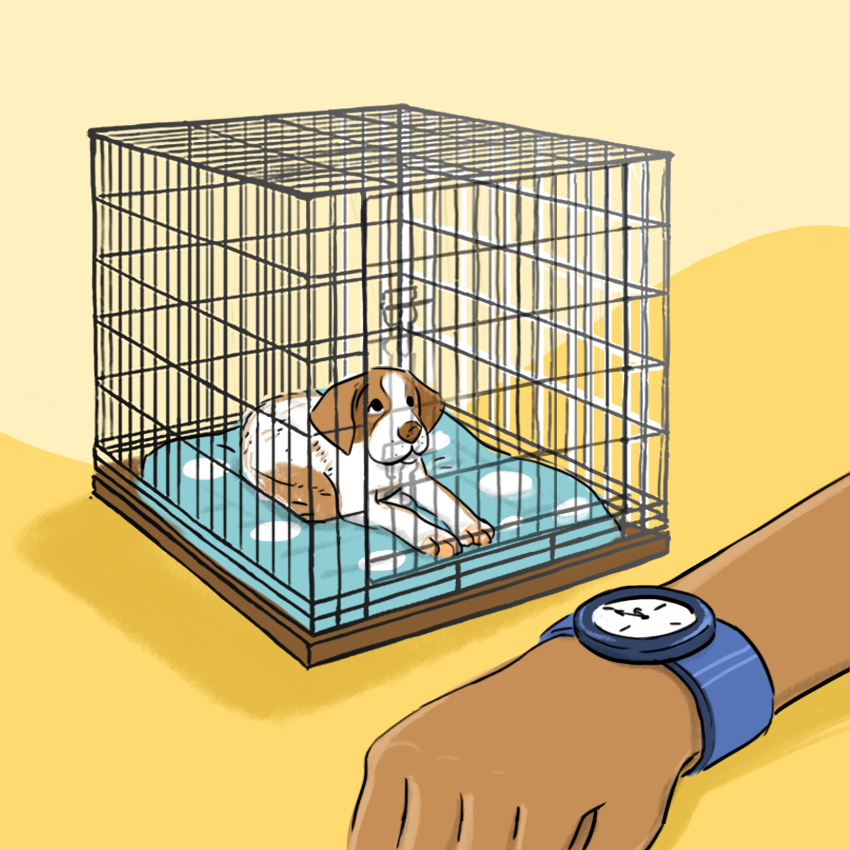
While crate training, be sure to mix up when you crate your puppy so that it isn't always associated with you leaving or bedtime. This will make it easier to get your puppy into the crate when you’re doing something he isn't overly keen on, like taking a trip to the vet.
Transporting Your Puppy in the Crate
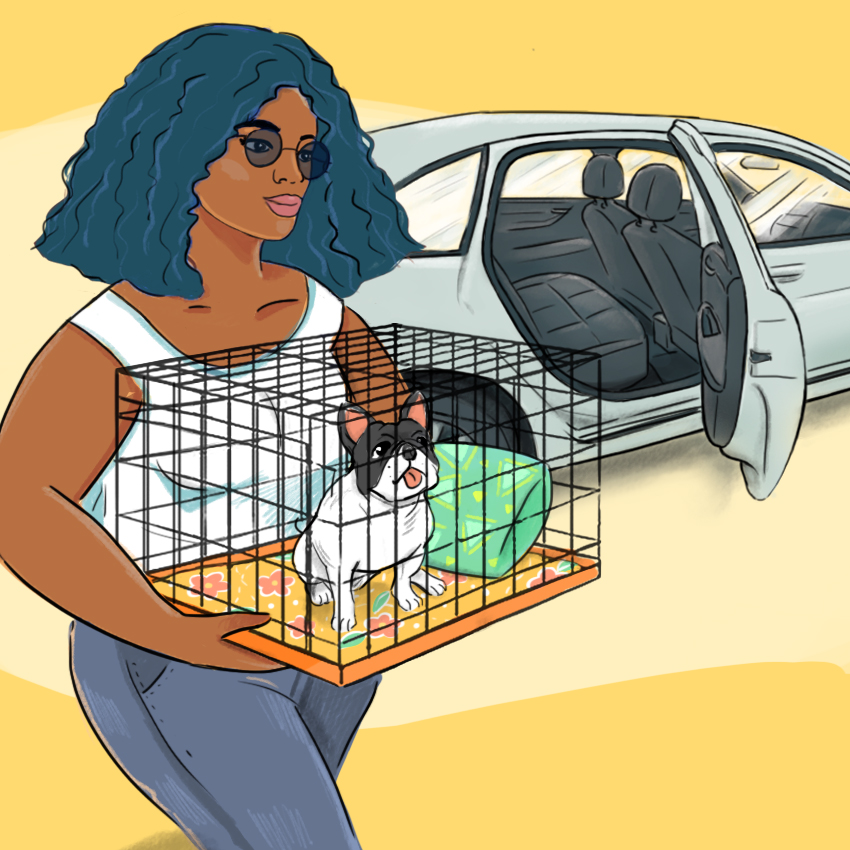
Your puppy’s comfort with a crate at home can also transfer to stress-free road trips. When you want to take your dog out of the house using the crate, stick to the same tone and routine that you use to get your puppy into the crate at other times.
First experiment with shorter trips around town or even somewhere fun, like the park. From there, slowly increase the duration of your travels until your dog looks forward to car rides in the crate.
Too Much Time in the Crate
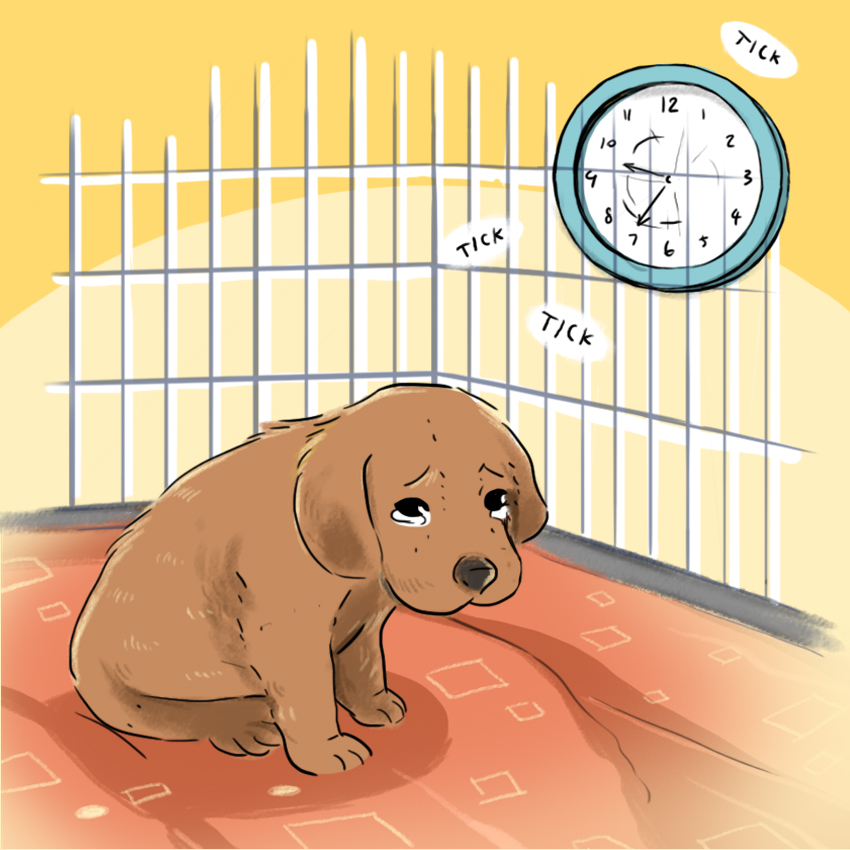
A crate is a wonderful training tool for puppies, but be sure that your dog isn’t spending too much time inside it. Puppies under 6 months old should not be in a crate for longer than three or four hours because they are still learning to control their bladders. And older dogs shouldn’t be left in a crate for much longer than that.
If you are using a crate during the day while you’re at work and during bedtime, then your pup might end up feeling trapped and isolated and probably isn’t getting the proper amount of exercise or stimulation.
Try to strike a healthy balance when it comes to the crate. If you find yourself relying on it more than you should be, consider making other arrangements to suit your puppy’s needs (like hiring a dog walker or finding a good doggy day care).
What to Do If Your Dog Is Whining in the Crate
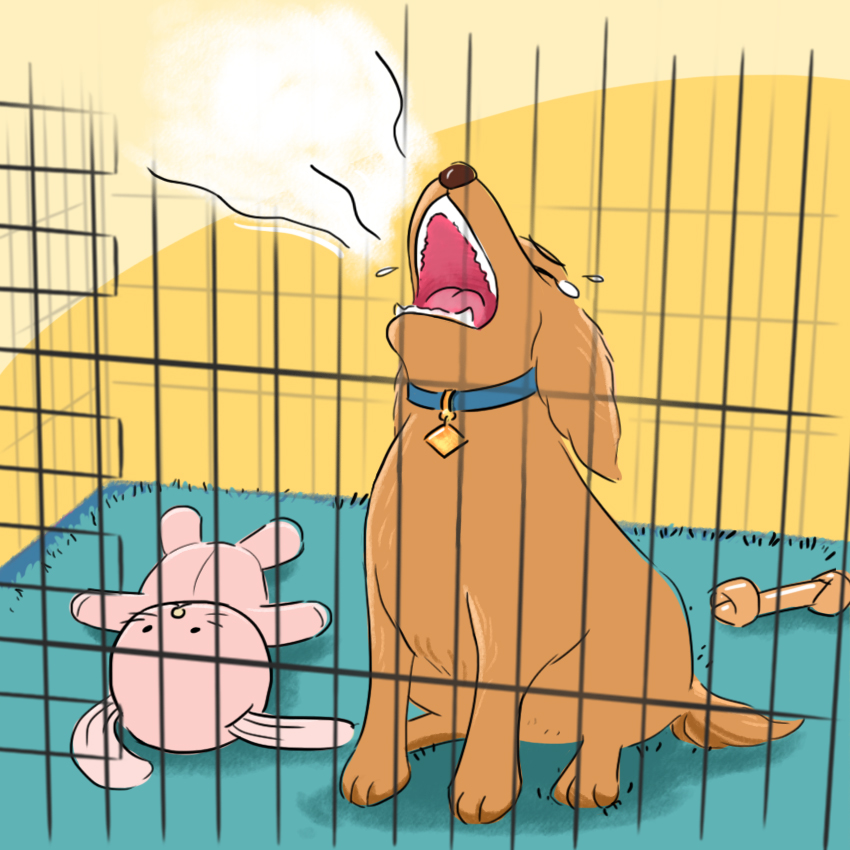
Unless your puppy is beyond chill, there will likely be some whining to deal with when you’re crate training, and it can often be difficult to figure out why your dog is making fussy noises. While you should acknowledge the fact that your puppy could be alerting you to the need to go outside for some potty relief, you don’t want to let puppy out if he's just complaining about being in the crate.
When your puppy starts to whine, try ignoring the complaints for a few minutes to see if pup calms down. If the whimpering persists, do something that is a cue to your dog that you might let him out to pee. If your puppy responds to that cue, let him outside, but only to do his business, not to play.
If it turns out that your puppy is whining just because he's upset about being in the crate, hold strong and don’t give in. If your puppy learns that whining equals escape, it could just get worse.
What to Do If Your Dog Has Separation Anxiety
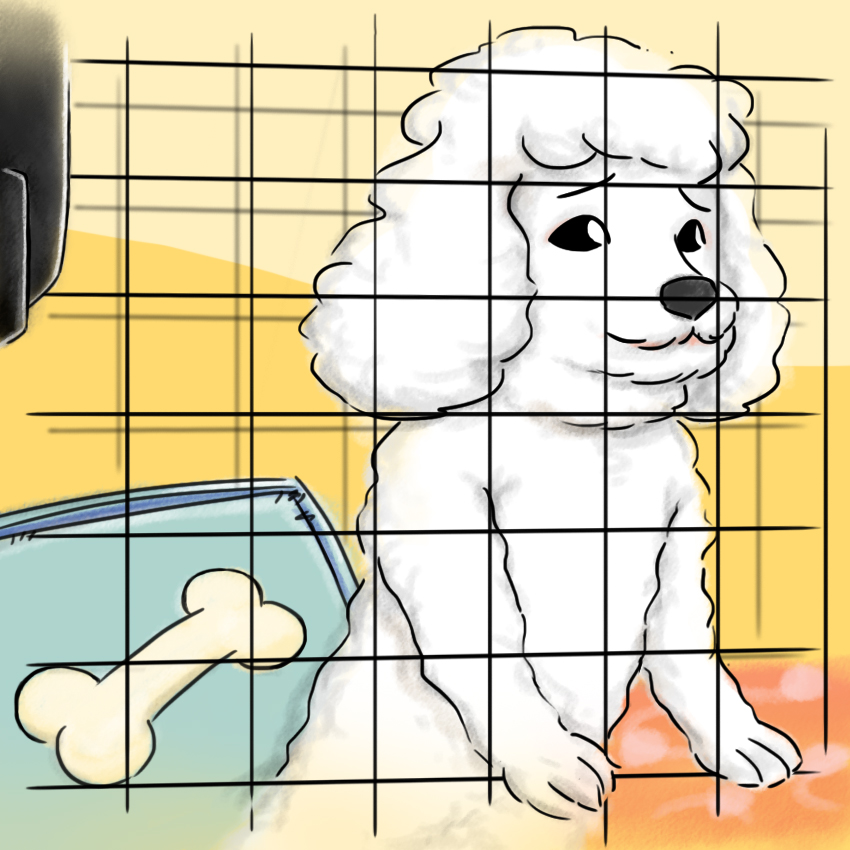
If your dog is acting out when you leave, keeping him in a crate might seem like a good option. But if your puppy is suffering from separation anxiety, then a crate will not help. In fact, your dog could end up injuring himself while trying to get out of the crate in a state of panicked desperation.
Instead, if you think your pup is dealing with anxiety, you need to address that directly using specific methods to calm and destress your beloved animal. Your vet or dog trainer can give you tips on how to deal with your dog's separation anxiety.
What Not to Do While Crate Training
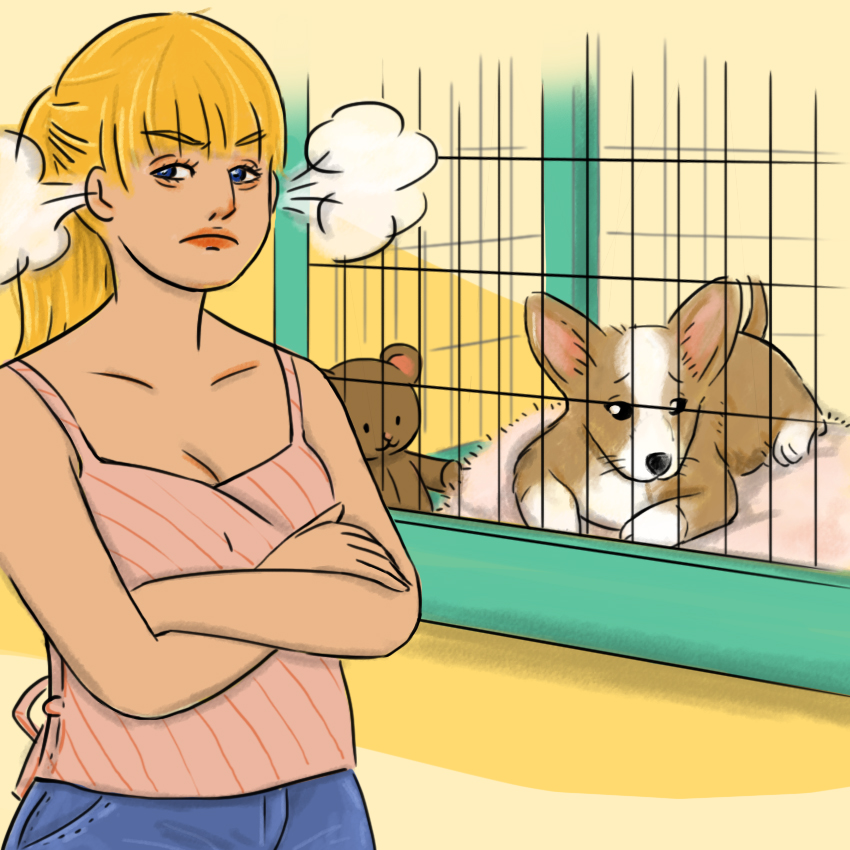
Just as you shouldn't use a crate to deal with separation anxiety, you also shouldn't use it as a form of punishment. Don’t make the crate a place that your dog associates with shame or loneliness.
You also shouldn't overcrowd the crate with too many blankets, too many toys, or even too many dogs, and you certainly don’t want to let it get messy or dirty.
Make the crate a place that your puppy loves. That way, training your dog to use it voluntarily will ultimately be a pup-tastic success!

